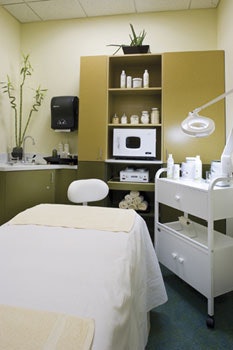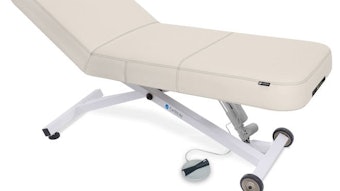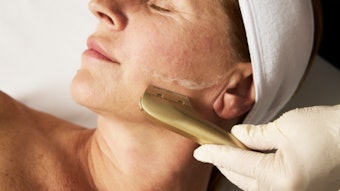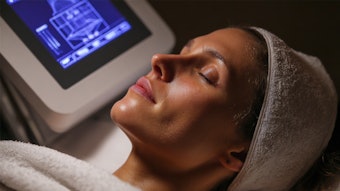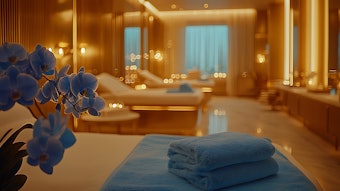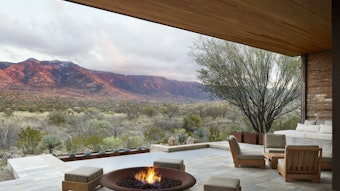
There is no escaping the fact that global warming is here. President George W. Bush has finally acknowledged its existence, and former Vice President Al Gore has won an Academy Award for his documentary An Inconvenient Truth and was a co-winner of the Nobel Peace Prize for helping make people aware of the challenges we face with these global environmental issues.
Due to climactic changes in the world’s weather, we have melting polar ice caps and more frequent earthquakes, droughts, tsunamis and natural disasters. As citizens of the Earth, it is our job to minimize the impact we have on our natural resources in order to allow future generations and species to thrive.
At Aveda Fredric’s Institute and Fredric’s Corporation, it has always been our mission to reduce our environmental footprint, and we have acted as stewards for the environment for many years. I like to think we were ahead of our time—and now we are right on time. It is not only important to get the facts on eco-conciousness, it is our moral obligation to do our part.
Change for the better
Now more than ever, it is vitally important for the spa industry to rise to the challenge of environmental responsibility. We—meaning the spa industry—are extensive users of electricity, heating and air conditioning, and water.
That is the bad news, yet these resources are required in order for us to perform our work. The good news is there are simple things we can do to lessen our impact on these resources and make a difference.
Once you start to implement some of the following changes that have worked for us, you will be amazed at how much better you feel about doing your part. Bring your staff along, too. Share with them what you are doing and why. Once you educate them, they can describe to their clients the changes the spa is making,and can also begin to implement changes in their own homes. This is one of my favorite aspects of being an environmentalist. I call it the ripple effect: As more and more people learn what they can do, they share that knowledge with others who also begin to make positive changes.
Be the brand to join
Clients of any spa are more likely to patronize an establishment that cares not only about their well-being, but also about the well-being of the world, as it is a sign of the spa’s respect for their health and an indication of its eco-philosophy. And you may find your establishment beginning to attract staff who are like-minded and want to work for a business that is doing its part. People want to join a brand. They buy into the culture, the beliefs and the standards. When they feel good about that brand, they become raving fans and will go the extra mile to do whatever it takes to make things happen.
As a spa owner, you can cultivate these people. There is a lot of value in having a staff that truly believes in your brand and all that it stands for, and their enthusiasm will spill over to your clientele. People vote with their dollars, and if they believe in who you are and what you are doing, they will be proud to support your establishment.
Sensor your spa
One of the first steps on the road to becoming more environmental is also one of the easiest: Put sensors on all your water faucets. Every sink, including lavatory sinks and even toilets, should have sensors that limit the amount of water used. This will save a tremendous amount of this precious resource.
Occupancy sensors on light fixtures in bathrooms and any rooms people are routinely in and out of will help save power and decrease your electric bill, as well. There is no reason to have lights on in an unoccupied room.
And while we’re on the subject of lighting, there are many great new options in energy-saving bulbs. Fluorescent and metal halide lamps reduce heat and energy waste. If you are not up to speed on the many options available, I recommend going to a hardware store and asking someone in the lighting department to help educate you. These bulbs are not always right for every area of a spa, so be sure to learn about their applications and use them in the right places. Skylights are also a great option if you are in the designing mode. They enhance natural lighting and reduce the need for energy-eating supplemental light fixtures.
The energy efficient way
Next, consider the laundry. Front-load washers use 65% less energy and one-third less water than top-loading washers, so if you are remodeling or building a new spa, consider this update.
On the horizon—and another thing to think about if you’re planning a new spa—are electric tankless hot water heaters for hot water on demand in place of standard hot water heater tanks. These are currently available in the residential market and some business applications. There also are washing machines currently available that heat only the water they need rather than the entire household water tank. Water heaters that hold gallons and gallons of water and heat that water 24/7take up valuable space and are wasteful. I predict they will be obsolete in about ten years.
In every area of your business, I encourage you to find the most environmentally friendly products available. Look for the Energy Star label on appliances and systems, such as air conditioning; this rating is equivalent to an environmental seal of approval and ensures that less energy than the required federal efficiency is used. Use the Web site www.energystar.gov, clicking on the tab for “Buildings & Plants,” to get useful environmental information on putting Energy Star savings into practice.
Also, check with your local gas and electric power provider regarding your utilities, as many retrofit and construction changes you make to lighting, commercial washers and HVAC systems offer you cash incentives for installing high-efficiency equipment. Don’t hesitate, it could save you a lot of money now and in the future. And while you are there, look at savings for home.
We’ve used a damper system with our air conditioning unit so when the outside tempurature reaches 50°F or below, the system pulls in that cool air for recycling through an automatic gauge set off by the thermostat. Spas tend to use their air conditioners year-round because of all the bodies, lighting and electrical tools that contribute to the facility’s heat and need for additional cooling. Ceiling paddle fans are great for circulating air as well and decrease the need for air conditioning. And don’t forget to open windows when you can, too.
Sustain your staff
Once we are doing all we can to make our spas sustainable in terms of the environment, we also need to consider how we can sustain another important spa resource: our spa technicians. There are a number of trends I foresee that can help us in this area. One is the creation of a full-service spa technician—someone who does nails and makeup as well as facials, waxing and body treatments. It is vitally important to diversify and be more well-rounded, as the spa technician of the future will be more of a generalist than a specialist. So, instead of doing five facials a day, the spa technician will be able to spend the whole day with their client, providing all the services they need and want.
In terms of retail, consumers today have way too many choices on how to care for their skin. There are a lot of quick fixes out there that confuse more than repair, so spa personnel would be doing their clients a great service to create take-home kits for at-home maintenance, complete with personalized usage recommendations.
Light the way
All of these ideas and concepts will not only make your spa more sustainable and profitable, but will also give you a competitive edge in your community. Remember to ask yourself when making decisions if they are environmentally sound. Are you cutting back, reserving and saving whatever you can? Challenge yourself and your spa’s team members to go the extra mile. Everyone in your ever-expanding circle will be glad you did.
